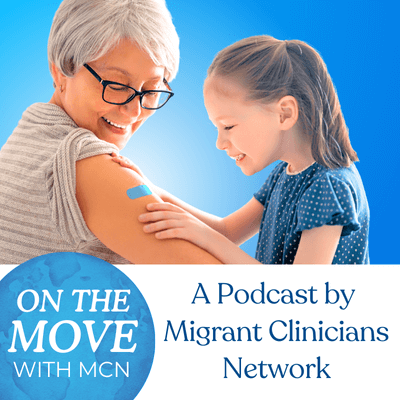How Do We Avoid Another EHR Mishap? Part Two
In light of the recent mishandling of a patient with Ebola virus in Dallas, Texas, MCN has been discussing internally the importance of communication between each patient’s care team. Such issues greatly affect migrant clinicians, where language and cultural differences may create additional communication barriers. Please see the first part of this two-part posting to hear more about communication for migrant clinicians. In this post, we focus on the importance of a thorough and well-communicated patient history, which is at the core of the misdiagnosis of the patient with Ebola in Texas. The following blog has been created based on personal accounts and opinions of Dr. Ed Zuroweste, MCN’s Chief Medical Officer. They do not reflect in any way the views of Migrant Clinicians Network.
The Art of the Patient History
Every year, I go with a group of family doctors and medical students to Honduras, where we spend weeks in the rural parts of the country, offering comprehensive primary and emergency health care to a poor population in this low-resource community. It never ceases to amaze me when we see the students engaging in provider/patient conversations with the patients for the first time. It seems as if they are in a hurry to obtain a quick history and to do a very cursory physical exam. They usually come to the family doctors and me with questions on next-steps, because since they have not taken a thorough history or done a focused physical exam they are unable to develop an adequate differential diagnosis. They wish to quickly jump to diagnostic tests to make a diagnosis. My responses usually remain consistent, and pertain to the patients’ medical history. In each case, after the student goes back, asks a more detailed patient history, and performs a focused physical exam, then we are able to come collectively to a proper diagnosis using all of the appropriate information. What usually surprises the students, however, is that we are able to come to these diagnoses without the use of all the lab testing that they’re used to in their medical school hospitals in the US. I have been taught, and have found in my over 35 years of primary care practice, that for the typical patient presenting to a primary care provider, about 90% of the time a clinician can develop an adequate differential diagnosis and then, with reasoning, the clinician can make an accurate presumptive diagnosis using labs and x-rays to merely confirm the preliminary diagnosis.
Technology is a vital part of our society. It has been critical in the advancement of medicine. However, recently, I have been noticing a cultural shift in the clinical dependence by clinicians on technology. It is becoming so normal to ask for tests for the most basic assessments that I fear that this part of the art of medicine is being lost. As a migrant clinician, it’s safe to say that I haven’t had access to the most up-to-date technology while in the field. That being said, I have felt very comfortable and confident in my diagnoses while in the field for the last thirty-five years. The reason: there is so much valuable information in a culturally and linguistically taken history from the patient and a thorough –and focused – physical exam.
Usually after the Honduras trips, I get feedback from the students stating that, because of the trip, they remember why they went to medical school and why they wanted to become doctors. I have also frequently heard the statement: “For the first time, I felt like a real doctor.” Personally, I hope that these newly trained clinicians continue to spread the art of taking a good medical history and doing an appropriate exam. It needs to be remembered that the most potent, most cost-effective and most accurate diagnostic tool that we have in our advanced age of technology is still an accurate comprehensive patient history.
- Log in to post comments





